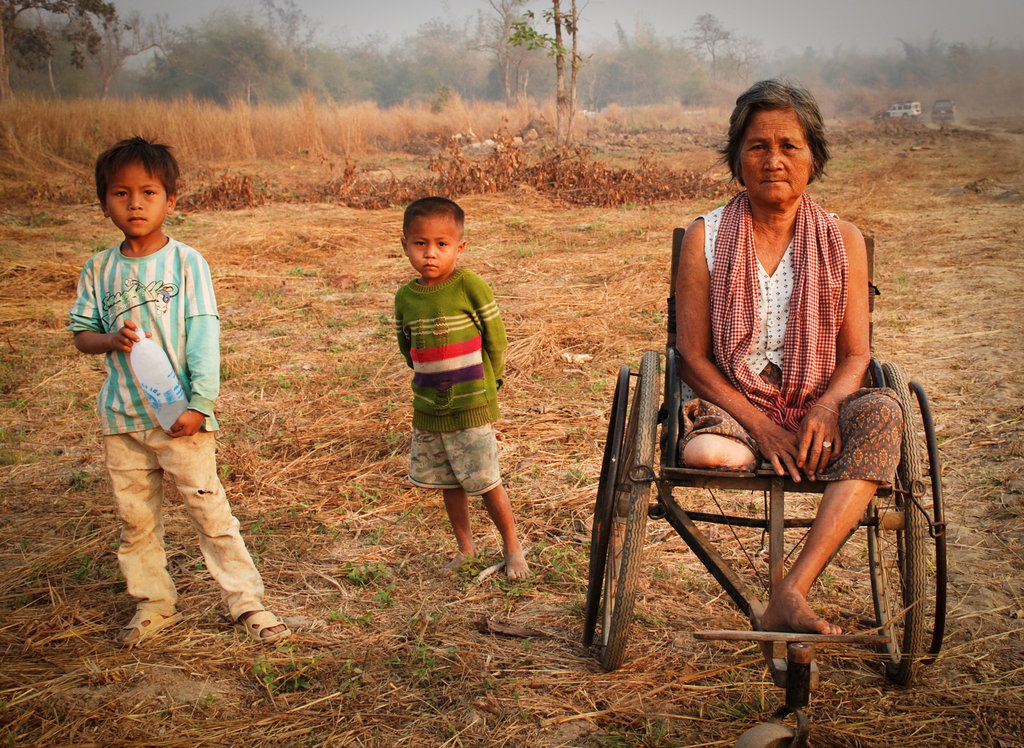- About
- Topics
- Picks
- Audio
- Story
- In-Depth
- Opinion
- News
- Donate
- Signup for our newsletterOur Editors' Best Picks.Send
Read, Debate: Engage.
| November 06, 2019 | |
|---|---|
| topic: | Security |
| tags: | #landmines, #Zimbabawe, #human right |
| located: | Zimbabwe |
| by: | Cyril Zenda |
A cattle-herder since the age of 12, Simango’s duty is to make sure that his employer’s large herd of cattle does not succumb to malnourishment; a very difficult job in this arid area, in which the harsh realities of climate change have unfolded before his eyes with the coming of each new dry season.
For him, this means travelling long distances and wandering around vast tracts of land in search of both pasture and water for the animals. As he does this, he is dancing with death. The areas are heavily infested with deadly anti-personnel land mines, a legacy of a brutal decolonisation war that ended 40 years ago.
“Many people have lost life and limb after stepping on landmines in this area”, says Simango. “I have lost many cattle since I started working as a cattle herder in this area in 2005”, he added. He was born in 1993, a good 14 years after the war ended in 1979.
Zimbabwe, previously Rhodesia, became independent in 1980, bringing to an end a tumultuous 90 years of British settler colonial rule.
To deter the armed guerrilla liberation war fighters that were easily crossing from neighbouring Mozambique and Zambia, between 1976 and 1979 the Rhodesian army planted an estimated 3 million anti-personnel mines in five major minefields spread over 850 km along the country’s eastern and northern borders.
As of the end of 2016, these landmines had killed more than 1,650 people and maimed over 2,000 others while more than 120,000 cattle had also been killed. This is in addition to countless numbers of prized wild animals such as elephants, rhinoceros, lions, giraffes and others also killed as some of the minefields extend into the Gonarezhou National Park.
Dense belts of landmine contamination – some with about 5,500 mines per square km – on Zimbabwe’s border with Mozambique have retarded development among some of the most marginalised communities. The landmines block access to residential land, inhibit cross-border trade, deny peasant and small-scale farmers access to agricultural land, separate communities from primary water sources, and adversely affect sanitation and livestock production.
As a result of this, most of the affected areas have the worst rates of poverty in the country and also suffer from the highest rates of food insecurity.
As of September 2018, the scale of landmine contamination in Zimbabwe was estimated to be over 66 million square metres. A survey of Zimbabwe’s northeastern region identified 87 communities (over 75,000 people) as directly affected by mines.
So serious is the threat to life that 78 minefields were recorded as being within 500 metres of residential areas.
There are currently five de-mining missions operating in Zimbabwe. These include the Zimbabwean Armed Forces’ National Mine Clearance Squadrons (NMCS), HALO Trust, Mines Advisory Group (MAG), the Norwegian People’s Aid (NPA) and
Belgian-registered APOPO (Anti-Persoonsmijnen Ontmijnende Product Ontwikkeling or Anti-Personnel Landmines Removal Product Development).
Zimbabwe National Army spokesperson Lieutenant Colonel Alphios Makotore says at the current de-mining rate, it is hoped that the last mine will be removed in 2025.
“You cannot move around freely in this area,” said Willie Makoti, the chief of the Sengwe area. “We can’t wait for this exercise to come to an end because we live in fear every day.”
De-mining efforts have been slow in the past due to lack of both funds and commitment on the part of the government. When it comes to the issue of landmines, since 1980, the government of Zimbabwe literally wept with one eye while rejoicing with the other, as the country was itself a producer and exporter of these deadly explosives. As part of its import substitution and sanction-busting measures, the embattled Rhodesian government had set up an arms plant in Harare (then Salisbury), which plant produced most of the mines that haunt villagers in remote areas today. The new government inherited the arms firm, reconstituted as the Zimbabwe Defence Industries and continued producing and exporting landmines and other small arms until the firm thankfully went bankrupt due to mismanagement four years ago.
By copying the embed code below, you agree to adhere to our republishing guidelines.
